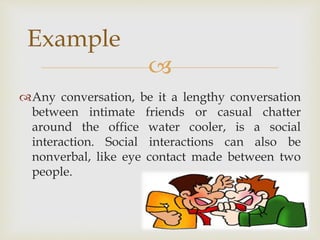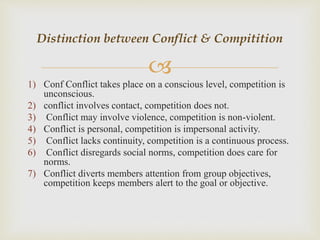This document discusses social interaction and social processes. It begins by defining social interaction as an exchange between two or more individuals that is a building block of society. Methods for studying social interaction include symbolic interactionism and ethnomethodology. The document then discusses associative social processes like cooperation, accommodation, and assimilation that integrate society and dissociative processes like competition and conflict that can lead to social disintegration. It provides examples and characteristics of different social processes.












































